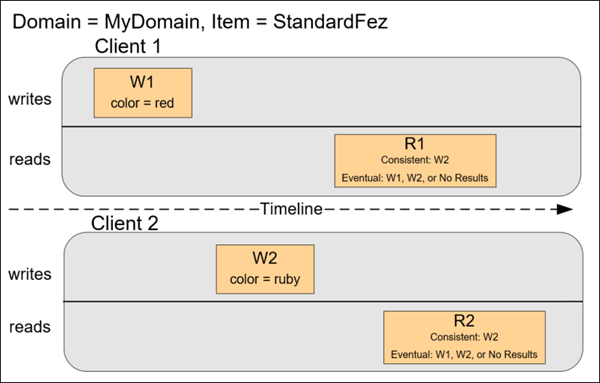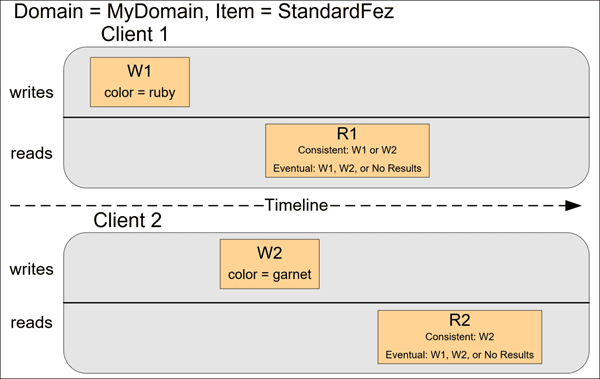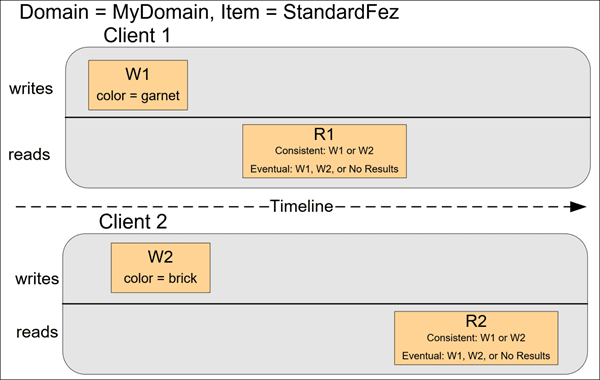What Is Amazon S3?
Amazon Simple Storage Service is storage for the Internet. It is designed to make web-scale computing easier for developers.
Amazon S3 has a simple web services interface that you can use to store and retrieve any amount of data, at any time, from anywhere on the web. It gives any developer access to the same highly scalable, reliable, fast, inexpensive data storage infrastructure that Amazon uses to run its own global network of web sites. The service aims to maximize benefits of scale and to pass those benefits on to developers.
This guide explains the core concepts of Amazon S3, such as buckets and objects, and how to work with these resources using the Amazon S3 application programming interface (API).
Introduction to Amazon S3
This introduction to Amazon Simple Storage Service is intended to give you a detailed summary of this web service. After reading this section, you should have a good idea of what it offers and how it can fit in with your business.
Topics
Overview of Amazon S3 and This Guide
Amazon S3 has a simple web services interface that you can use to store and retrieve any amount of data, at any time, from anywhere on the web.
This guide describes how you send requests to create buckets, store and retrieve your objects, and manage permissions on your resources. The guide also describes access control and the authentication process. Access control defines who can access objects and buckets within Amazon S3, and the type of access (e.g., READ and WRITE). The authentication process verifies the identity of a user who is trying to access Amazon Web Services (AWS).
Advantages to Amazon S3
Amazon S3 is intentionally built with a minimal feature set that focuses on simplicity and robustness. Following are some of advantages of the Amazon S3 service:
- Create Buckets – Create and name a bucket that stores data. Buckets are the fundamental container in Amazon S3 for data storage.
- Store data in Buckets – Store an infinite amount of data in a bucket. Upload as many objects as you like into an Amazon S3 bucket. Each object can contain up to 5 TB of data. Each object is stored and retrieved using a unique developer-assigned key.
- Download data – Download your data or enable others to do so. Download your data any time you like or allow others to do the same.
- Permissions – Grant or deny access to others who want to upload or download data into your Amazon S3 bucket. Grant upload and download permissions to three types of users. Authentication mechanisms can help keep data secure from unauthorized access.
- Standard interfaces – Use standards-based REST and SOAP interfaces designed to work with any Internet-development toolkit.
Note
SOAP support over HTTP is deprecated, but it is still available over HTTPS. New Amazon S3 features will not be supported for SOAP. We recommend that you use either the REST API or the AWS SDKs.
Amazon S3 Concepts
This section describes key concepts and terminology you need to understand to use Amazon S3 effectively. They are presented in the order you will most likely encounter them.
Buckets
A bucket is a container for objects stored in Amazon S3. Every object is contained in a bucket. For example, if the object named photos/puppy.jpg is stored in the johnsmith bucket, then it is addressable using the URL http://johnsmith.s3.amazonaws.com/photos/puppy.jpg
Buckets serve several purposes: they organize the Amazon S3 namespace at the highest level, they identify the account responsible for storage and data transfer charges, they play a role in access control, and they serve as the unit of aggregation for usage reporting.
You can configure buckets so that they are created in a specific region. For more information, see Buckets and Regions. You can also configure a bucket so that every time an object is added to it, Amazon S3 generates a unique version ID and assigns it to the object.
Objects
Objects are the fundamental entities stored in Amazon S3. Objects consist of object data and metadata. The data portion is opaque to Amazon S3. The metadata is a set of name-value pairs that describe the object. These include some default metadata, such as the date last modified, and standard HTTP metadata, such as Content-Type. You can also specify custom metadata at the time the object is stored.
An object is uniquely identified within a bucket by a key (name) and a version ID.
Keys
A key is the unique identifier for an object within a bucket. Every object in a bucket has exactly one key. Because the combination of a bucket, key, and version ID uniquely identify each object, Amazon S3 can be thought of as a basic data map between “bucket + key + version” and the object itself. Every object in Amazon S3 can be uniquely addressed through the combination of the web service endpoint, bucket name, key, and optionally, a version. For example, in the URL http://doc.s3.amazonaws.com/2006-03-01/AmazonS3.wsdl, “doc” is the name of the bucket and “2006-03-01/AmazonS3.wsdl” is the key.
Regions
You can choose the geographical region where Amazon S3 will store the buckets you create. You might choose a region to optimize latency, minimize costs, or address regulatory requirements. Amazon S3 currently supports the following regions:
- US East (N. Virginia) Region Uses Amazon S3 servers in Northern Virginia
- US East (Ohio) Region Uses Amazon S3 servers in Columbus Ohio
- US West (N. California) Region Uses Amazon S3 servers in Northern California
- US West (Oregon) Region Uses Amazon S3 servers in Oregon
- Canada (Central) Region Uses Amazon S3 servers in Montreal
- Asia Pacific (Mumbai) Region Uses Amazon S3 servers in Mumbai
- Asia Pacific (Seoul) Region Uses Amazon S3 servers in Seoul
- Asia Pacific (Singapore) Region Uses Amazon S3 servers in Singapore
- Asia Pacific (Sydney) Region Uses Amazon S3 servers in Sydney
- Asia Pacific (Tokyo) Region Uses Amazon S3 servers in Tokyo
- EU (Frankfurt) Region Uses Amazon S3 servers in Frankfurt
- EU (Ireland) Region Uses Amazon S3 servers in Ireland
- EU (London) Region Uses Amazon S3 servers in London
- EU (Paris) Region Uses Amazon S3 servers in Paris
- South America (São Paulo) Region Uses Amazon S3 servers in Sao Paulo
Objects stored in a region never leave the region unless you explicitly transfer them to another region. For example, objects stored in the EU (Ireland) region never leave it.
Amazon S3 Data Consistency Model
Amazon S3 provides read-after-write consistency for PUTS of new objects in your S3 bucket in all regions with one caveat. The caveat is that if you make a HEAD or GET request to the key name (to find if the object exists) before creating the object, Amazon S3 provides eventual consistency for read-after-write.
Amazon S3 offers eventual consistency for overwrite PUTS and DELETES in all regions.
Updates to a single key are atomic. For example, if you PUT to an existing key, a subsequent read might return the old data or the updated data, but it will never write corrupted or partial data.
Amazon S3 achieves high availability by replicating data across multiple servers within Amazon’s data centers. If a PUT request is successful, your data is safely stored. However, information about the changes must replicate across Amazon S3, which can take some time, and so you might observe the following behaviors:
- A process writes a new object to Amazon S3 and immediately lists keys within its bucket. Until the change is fully propagated, the object might not appear in the list.
- A process replaces an existing object and immediately attempts to read it. Until the change is fully propagated, Amazon S3 might return the prior data.
- A process deletes an existing object and immediately attempts to read it. Until the deletion is fully propagated, Amazon S3 might return the deleted data.
- A process deletes an existing object and immediately lists keys within its bucket. Until the deletion is fully propagated, Amazon S3 might list the deleted object.
Note
Amazon S3 does not currently support object locking. If two PUT requests are simultaneously made to the same key, the request with the latest time stamp wins. If this is an issue, you will need to build an object-locking mechanism into your application.
Updates are key-based; there is no way to make atomic updates across keys. For example, you cannot make the update of one key dependent on the update of another key unless you design this functionality into your application.
The following table describes the characteristics of eventually consistent read and consistent read.
| Eventually Consistent Read | Consistent Read |
|---|---|
| Stale reads possible | No stale reads |
| Lowest read latency | Potential higher read latency |
| Highest read throughput | Potential lower read throughput |
Concurrent Applications
This section provides examples of eventually consistent and consistent read requests when multiple clients are writing to the same items.
In this example, both W1 (write 1) and W2 (write 2) complete before the start of R1 (read 1) and R2 (read 2). For a consistent read, R1 and R2 both return color = ruby. For an eventually consistent read, R1 and R2 might return color = red, color = ruby, or no results, depending on the amount of time that has elapsed.

In the next example, W2 does not complete before the start of R1. Therefore, R1 might return color = ruby or color = garnet for either a consistent read or an eventually consistent read. Also, depending on the amount of time that has elapsed, an eventually consistent read might return no results.
For a consistent read, R2 returns color = garnet. For an eventually consistent read, R2 might return color = ruby, color = garnet, or no results depending on the amount of time that has elapsed.

In the last example, Client 2 performs W2 before Amazon S3 returns a success for W1, so the outcome of the final value is unknown (color = garnet or color = brick). Any subsequent reads (consistent read or eventually consistent) might return either value. Also, depending on the amount of time that has elapsed, an eventually consistent read might return no results.

Amazon S3 Features
Topics
This section describes important Amazon S3 features.
Storage Classes
Amazon S3 offers a range of storage classes designed for different use cases. These include Amazon S3 STANDARD for general-purpose storage of frequently accessed data, Amazon S3 STANDARD_IA for long-lived, but less frequently accessed data, and GLACIER for long-term archive.
Bucket Policies
Bucket policies provide centralized access control to buckets and objects based on a variety of conditions, including Amazon S3 operations, requesters, resources, and aspects of the request (e.g., IP address). The policies are expressed in our access policy language and enable centralized management of permissions. The permissions attached to a bucket apply to all of the objects in that bucket.
Individuals as well as companies can use bucket policies. When companies register with Amazon S3 they create an account. Thereafter, the company becomes synonymous with the account. Accounts are financially responsible for the Amazon resources they (and their employees) create. Accounts have the power to grant bucket policy permissions and assign employees permissions based on a variety of conditions. For example, an account could create a policy that gives a user write access:
- To a particular S3 bucket
- From an account’s corporate network
- During business hours
An account can grant one user limited read and write access, but allow another to create and delete buckets as well. An account could allow several field offices to store their daily reports in a single bucket, allowing each office to write only to a certain set of names (e.g., “Nevada/*” or “Utah/*”) and only from the office’s IP address range.
Unlike access control lists (described below), which can add (grant) permissions only on individual objects, policies can either add or deny permissions across all (or a subset) of objects within a bucket. With one request an account can set the permissions of any number of objects in a bucket. An account can use wildcards (similar to regular expression operators) on Amazon resource names (ARNs) and other values, so that an account can control access to groups of objects that begin with a common prefix or end with a given extension such as .html.
Only the bucket owner is allowed to associate a policy with a bucket. Policies, written in the access policy language, allow or deny requests based on:
- Amazon S3 bucket operations (such as
PUT ?acl), and object operations (such asPUT Object, orGET Object) - Requester
- Conditions specified in the policy
An account can control access based on specific Amazon S3 operations, such as GetObject, GetObjectVersion, DeleteObject, or DeleteBucket.
The conditions can be such things as IP addresses, IP address ranges in CIDR notation, dates, user agents, HTTP referrer and transports (HTTP and HTTPS).
AWS Identity and Access Management
For example, you can use IAM with Amazon S3 to control the type of access a user or group of users has to specific parts of an Amazon S3 bucket your AWS account owns.
For more information about IAM, see the following:
Operations
Following are the most common operations you’ll execute through the API.
Common Operations
- Create a Bucket – Create and name your own bucket in which to store your objects.
- Write an Object – Store data by creating or overwriting an object. When you write an object, you specify a unique key in the namespace of your bucket. This is also a good time to specify any access control you want on the object.
- Read an Object – Read data back. You can download the data via HTTP or BitTorrent.
- Deleting an Object – Delete some of your data.
- Listing Keys – List the keys contained in one of your buckets. You can filter the key list based on a prefix.






